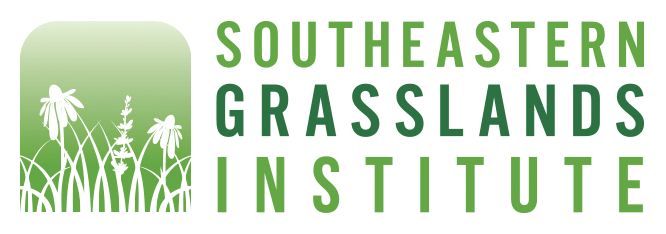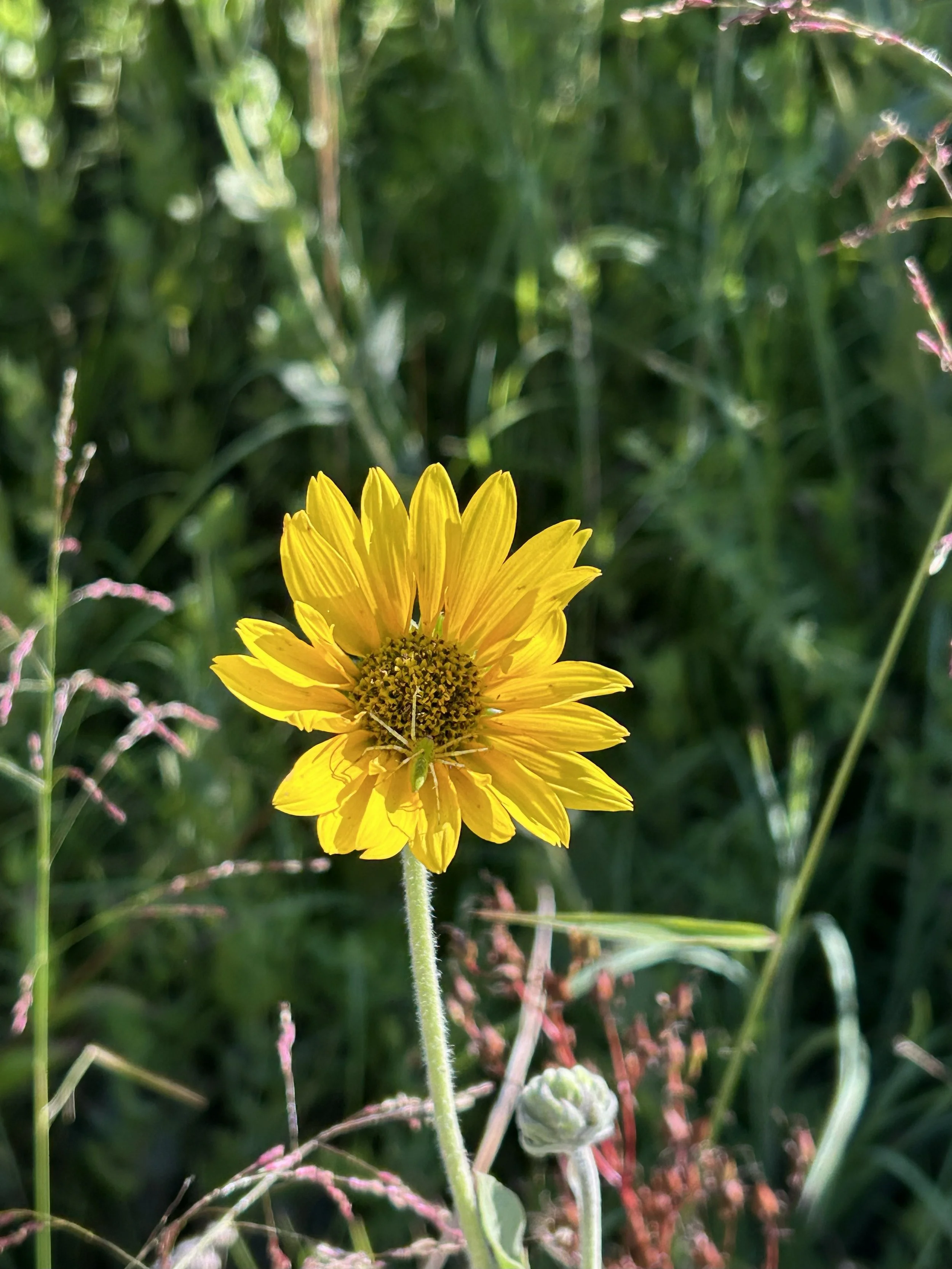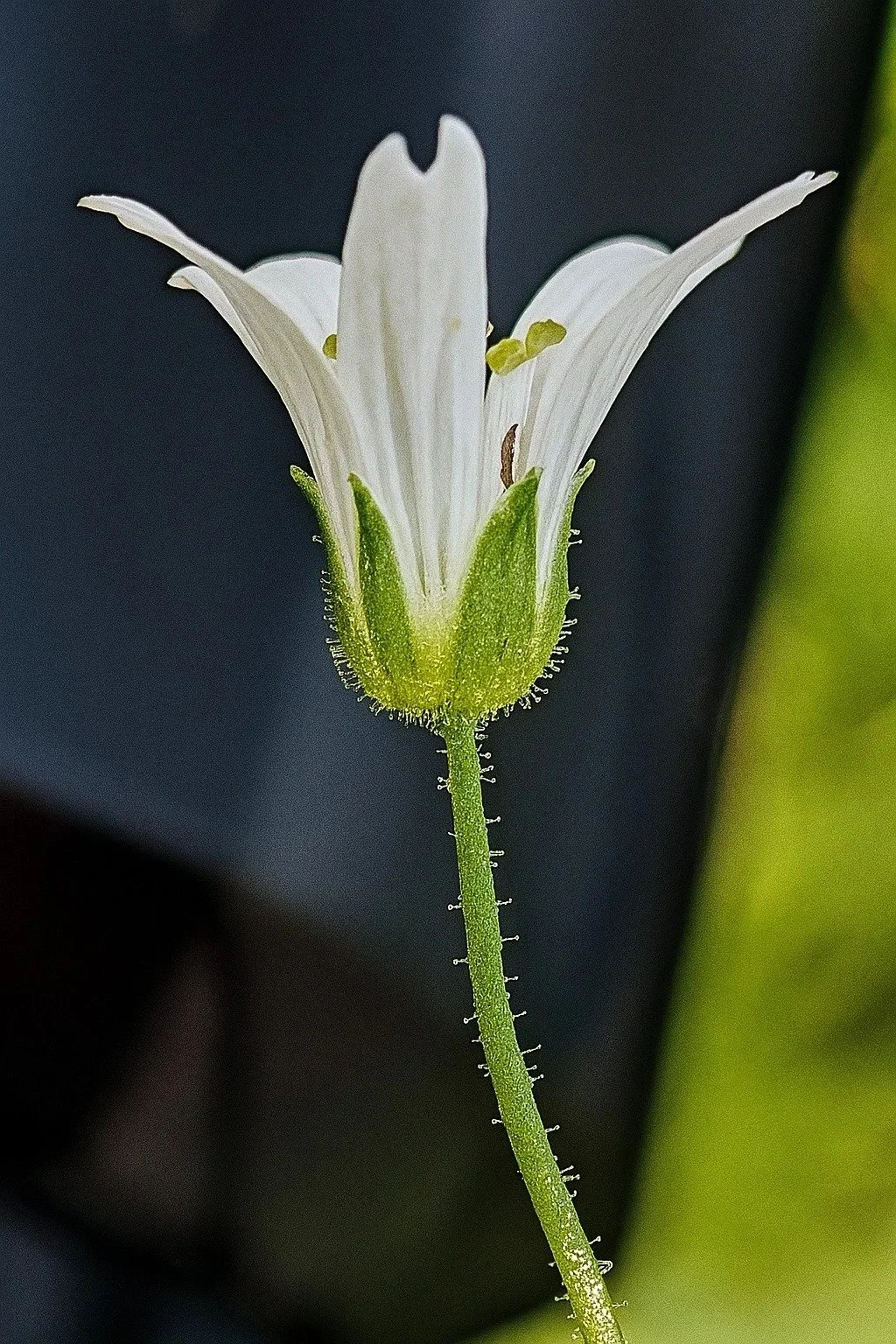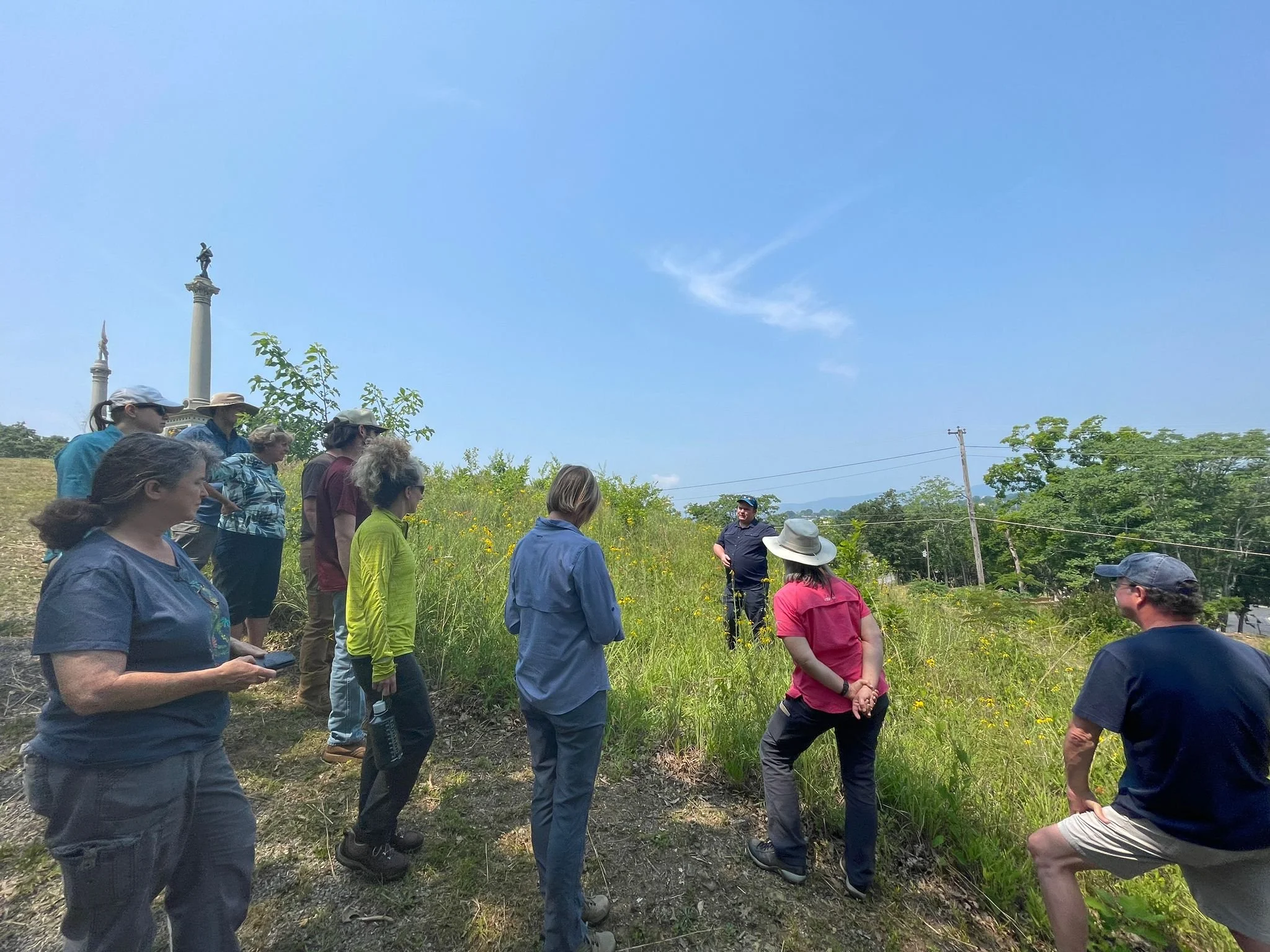Eastern tiger swallowtail (Papilio glaucus) on blazing star (Liatris spicata)
In late July 2025, the Southeastern Grasslands Institute (SGI) held one of its Seed Scouts Training sessions at Best Hope Farm, where acres of native prairie re-creations bloom along the rolling backroads of Dickson County, Tennessee. The 80+ acre property, marked by roadside signs that read “Prairie Re-Creation,” is a living testament to what one couple’s vision, persistence, and partnership can achieve.
As we toured the land, downy sunflowers (Helianthus mollis) and starry rosinweeds (Silphium asteriscus) swayed in the summer breeze and bees buzzed among mountain mint (Pycanthemum species) and bee balm (Monarda fistulosa) near the bunkhouse. Monarchs and swallowtails floated from flower to flower, feasting on the vibrant purple spikes of blazing star (Liatris spicata)—a prairie classic. At the heart of it all is Deborah, a woman whose retirement became a calling: restoring the historic prairies, savannas, and woodlands at Best Hope Farm, championing native plants, and advancing SGI’s mission to save the forgotten grasslands of the Southeast. Her husband, RJ Comer, leads their educational and outreach efforts, including turning Deborah’s wonky explanations into accessible posts about their efforts.
From City Life to Prairie Life
Green lynx spider (Peucetia viridans) on ashy sunflower (Helianthus mollis)
Deborah’s journey began far from Tennessee prairies. A former lawyer and real estate professional in California, she once tended a very small succulent garden in Los Angeles. When she and RJ moved east in 2017, she brought with her traditional non-native landscaping notions and no understanding of invasive species, which she planted like periwinkle (Vinca minor), and creeping jenny (Lysimachia nummularia). But something wasn’t right. Other than the invasive species, the plants were too fussy and needed fungicides and just the right Goldilocks amount of water. “I thought, this is ridiculous,” she recalls.
A chance introduction to native plant advocates Mike Berkley of Grow Wild Nursery opened her eyes to a new approach. She started small—with a butterfly garden. But in 2019, she attended the Wild Ones Plant It Native Symposium in Chattanooga, where she heard SGI’s Dr. Dwayne Estes speak about the plight of America’s endangered grasslands. “I was blown away and fired up,” Deborah says. When she told RJ she wanted to experiment on a small corner of their 4-acre pasture, he said: “Go big or go home.”
Planting Seeds of Change
Image of a seed mix collected from prairies of Best Hope Farm.
With RJ’s encouragement, Deborah jumped in, not realizing how difficult it would ultimately be. She started by working with Robert Hoffman at Roundstone Native Seed on a seed mix and learned how to prepare the 4-acre site. That was the easy part because of Robert’s expertise and unwavering support. Once the site prep was completed, however, the contractor she had hired a year in advance to drill the seed repeatedly failed to show up. At wits end, Deborah left a message for SGI, hoping to find someone who could get the seed in the ground. To her surprise, Dwayne called her back the next day. SGI was then only two years old, with a tiny staff and a big vision.
From that phone call bloomed a partnership. Roundstone Native Seed ultimately seeded her fields, and Deborah and Dwayne, who coincidentally lived 20 minutes apart, became fast friends. Deborh’s role soon expanded beyond Best Hope Farm. With her background in business, the law, and nonprofit and organizational management, she began asking tough but necessary questions: “What are SGI’s priorities? How will you grow? What about the organization’s structure?”
Building a Movement Behind the Scenes
“Did I tell you Deborah is my secret weapon?” is something Dwayne will frequently say upon mentioning Best Hope Farm.
Over the next several years, Deborah became an integral part of SGI’s growth, serving as an advisor, sounding board, and even Interim Director of Operations for nine months during a crucial growth phase. “I blame Dwayne for everything,” she jokes, reflecting on how a single presentation led her to one of the most meaningful chapters of her life.
Her philosophy? “What is your highest and best use?” For SGI, that meant letting Dwayne focus on the larger vision, organizational capacity, and outreach, while Deborah worked to assemble the administrative backbone that eventually allowed SGI to scale from a handful of staff to nearly 50 employees today.
A Legacy in Bloom
Goldenrod flowering at Best Hope Farm
Today, Best Hope Farm is more than a private restoration—it’s a hub of education and inspiration. Deborah’s goals are to continually improve the restored and re-created grassland ecosystems at Best Hope Farm, eradicate invasive species, do real science to test theories and improve best practices, and inspire others in her region to do similar work. To those ends, Auburn University’s Forest Fire and Ecology Lab have incorporated Best Hope Farm into a broader regional study to take surveys measuring the carbon drawdown potential of native restoration habitat. Deborah worked with local governments to pass ordinances requiring a percentage of native planting in landscape plans and prohibiting invasive species. The Best Hope Farm Facebook page is more than a show-and-tell platform of pretty pictures. It's often entertaining and visitor-friendly posts include vital information about native habitat, plant biology, and restoration practices.
Throughout all her work, Deborah has maintained her special relationship with SGI. The Best Hope Farm bunkhouse has hosted multiple SGI staff and trainees, and the farm has been the site of several SGI Field Days and Seed Scout trainings. Deborah’s vision is that part of Best Hope Farm—particularly the bunkhouse parcel, which includes savanna and prairie remnant restorations—will be managed in perpetuity, potentially in partnership with nearby Montgomery Bell State Park or SGI itself.
One large step in that direction is SGI’s recent award of the America’s Ecosystems Restoration Initiative which will bring significant resources to the project’s Dickson County anchor point of 100+ continuous acres of restored grassland, which includes Best Hope Farm and Montgomery Bell State Park.
Gratitude for Grassroots Champions
SGI is fortunate to have community partners like Deborah who not only restore their own land but also lend their expertise, counsel, and heart to help build a conservation movement. Her journey from “city girl with a succulent garden” to a prairie pioneer underscores what’s possible when passion meets purpose.
“Helping Dwayne achieve this mission—now and going forward—has been the most rewarding accomplishment of my life,” Deborah reflects.
We couldn’t agree more.





















